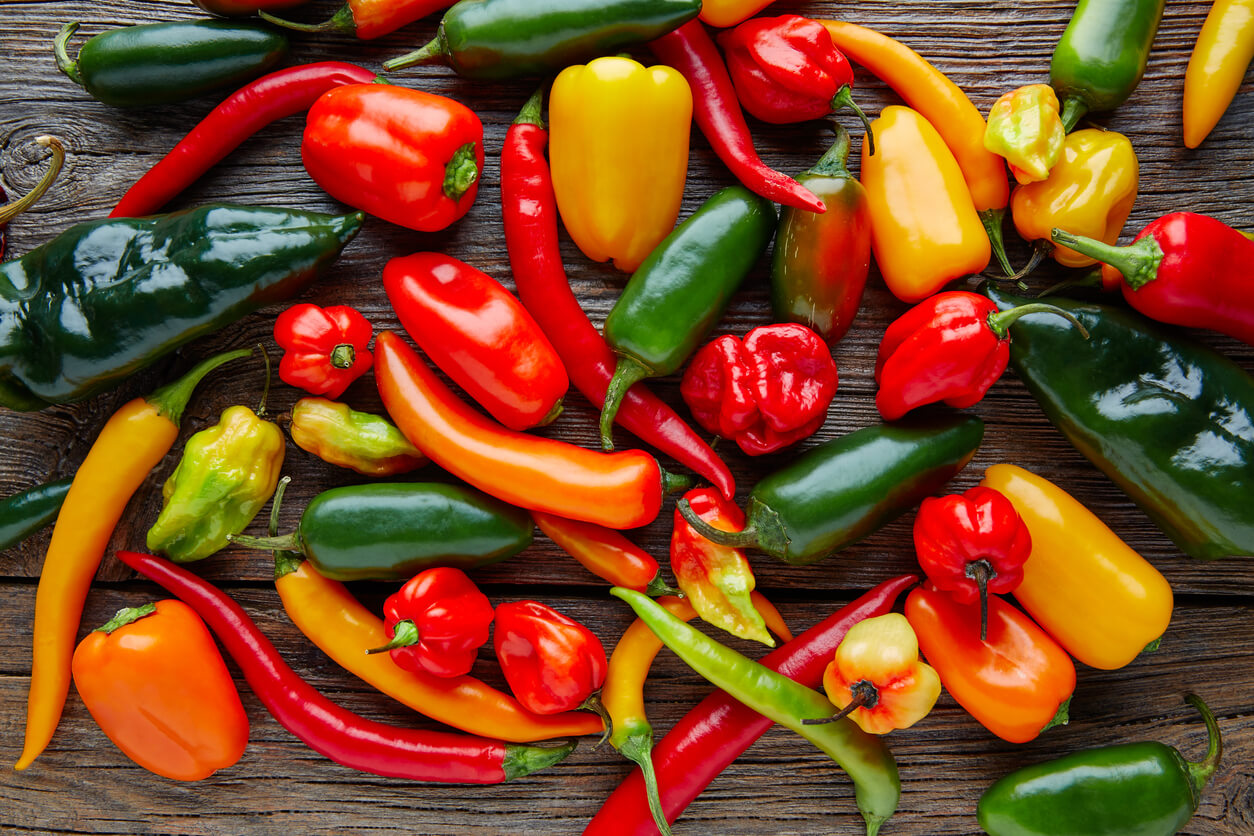
Assortment of hot pepper varieties
Hot peppers, or chile peppers, are part of the Capsicum genus. They’re part of the Solanaceae family, which includes tomatoes, eggplant, and potatoes. When you’re planning your garden, make sure you don’t plant your peppers where your potatoes, tomatoes, or eggplant have been.
Chile peppers were one of the first crops domesticated in the Americas more than 6,000 years ago in what is now modern day Mexico. Even then, Indigenous peoples recognized the medicinal value of these spicy plants; the capsaicin in chile peppers is a great natural pain reliever.
Chile peppers have been domesticated over the centuries into five species:
- Capsicum annuum: includes ancho peppers, jalapeño peppers, Thai peppers, poblano peppers, serrano peppers, and cayenne peppers
- Capsicum chinense: includes habanero peppers, ghost peppers, Scotch Bonnet, and the Carolina Reaper
- Capsicum frutescens: includes tabasco peppers, Malagueta peppers, Malawian peppers, and Kambuzi peppers
- Capsicum baccatum: includes aji peppers, tabasco peppers, Bishop’s Crown peppers, and the Piquanté peppers (Peppadews)
- Capsicum pubescens: includes rocoto, canario, and piri piri peppers
Capsicum annuum, which also includes sweet bell peppers, is the most economically important species. A quarter of the world’s population eats peppers daily; they’re a common ingredient in African, Asian, European, and American cuisine.
Hot peppers come in a variety of shapes. They range from short, stubby pods to longer, narrower pods, to a range of roundish shapes from really round to bulbous or bumpy to small bell pepper-shaped with a pointy end. Some pod peppers grow upright, while others hang down like fiery ornaments. As your peppers mature, they’ll certainly add some lovely color to your garden.
These are some of the pod types you’ll encounter when you start exploring hot peppers:
- Anaheim/New Mexico
- Ancho/Poblano
- Andean Aji
- Banana/Long wax
- Bell
- Blocky
- Cayenne
- Cheese/Tomato-shaped
- Cherry
- Chiltepin/Tepin
- Cluster
- Cubanelle/Italian frying
- Elongated bell
- Elongated habanero
- Habanero
- Heart-shaped
- Jalapeño
- Pasilla
- Pepperoncini
- Pequin/Piquin
- Serrano
- Short wax
- Squash
- Tabasco
There are hundreds of varieties of hot peppers available from seed companies and mail-order nurseries. Ask your local extension center which type of peppers are best suited for your gardening needs.
Which type of hot peppers have you grown? Do you have a preference? Please share your opinion.


 Previous
Previous


I love jalapeno peppers but often they are too hot for my lips and tongue. Is there another pepper with some heat that is a little less hot?